Are you looking for the best healthy dumplings to cook at home? These pan-fried, half-moon shape dumplings replicate the authentic gyoza you’d eat in Japan. The one difference is that these gyoza are perfect for your healthy diet (low carb, gluten-free). Learn how to cook them the perfect golden brown.
Jump to Recipe
Everyone in my family loves gyoza, especially my sister, Liz.
We’ve been making homemade Japanese dumplings since we were kids.
As an adult, I still want to devour an entire plate of gyoza by myself just like when I was teenager.
But are dumplings healthy?
I’m no longer in my 20s or 30s.
For years, I rationalized that the wonton skins were thin, so gyoza weren’t that high in carbs.
Then, I got some good advice from a friend.
“Come on, Matt. Wake up! Stop lying to yourself!” (LOL)
But wait. What if gyoza was a healthy, diet food?
Did you believe me if I said these gyoza are low-carb and gluten-free?
Try these dumpling-shaped healthy, weight-loss miracles for yourself.
Hallelujah–!
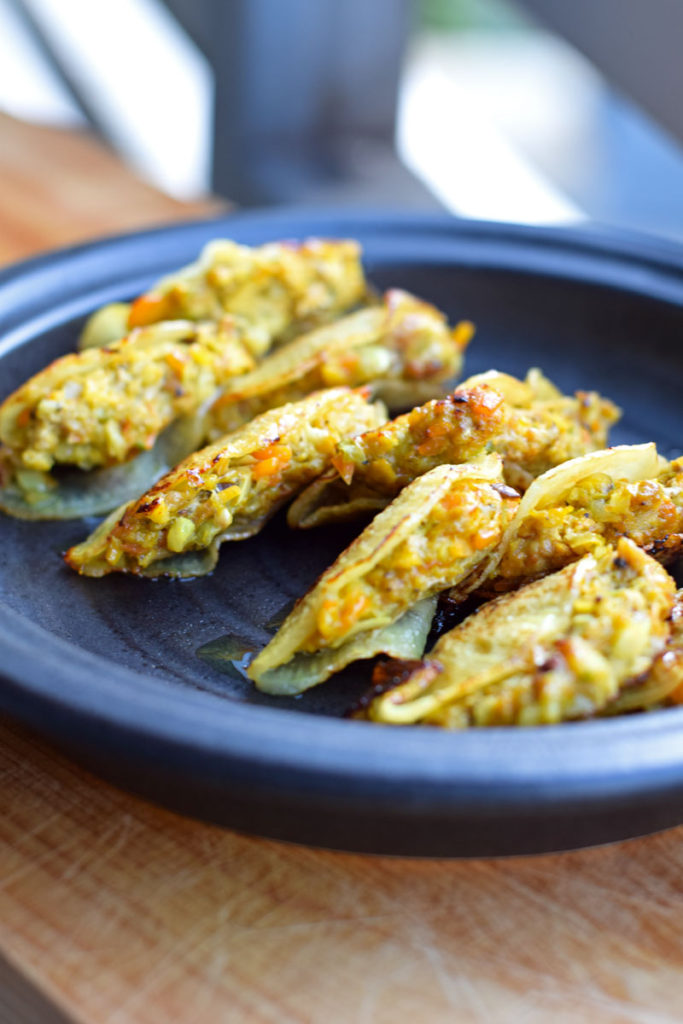
How healthy are gyoza dumplings?
If your diet is gluten-free, low carb, keto, or just healthy in general, gyoza are most not likely on your plate.
This recipe for healthy dumplings will change that.
“Hello, gyoza! Welcome back to my belly, old friend!”
The wonton skins you buy from the store, or make at home, are made from all-purpose flour, water, and a little salt.
The dough is roughly equivalent to what you’d use to make a pastry, minus the fat.
No, regular steamed or pan-fried gyoza aren’t that unhealthy.
But both you and I know that you’re not going to stop after having one or two!
Who would!?
Healthy dumpling wrappers
If you look closely at these gyoza, you’ll see that they aren’t wrapped with wonton skins.
If you look even closer, you’ll see the texture on the wrappers.
For my healthy “wonton wraps”, I used thin slices of daikon radish.
Daikon radishes are one of the most keto-friendly vegetables, with only 2.7 g of net carbs per serving.
If you have no idea what daikon is or you don’t live in Japan, don’t give up.
Daikon may be available at upscale supermarkets like Whole Foods or your local Asian grocery store.
If you don’t have any luck finding Japanese daikon, thin slices of zucchini would also work.
You can check out my other healthy dumpling recipe that uses zucchini here.
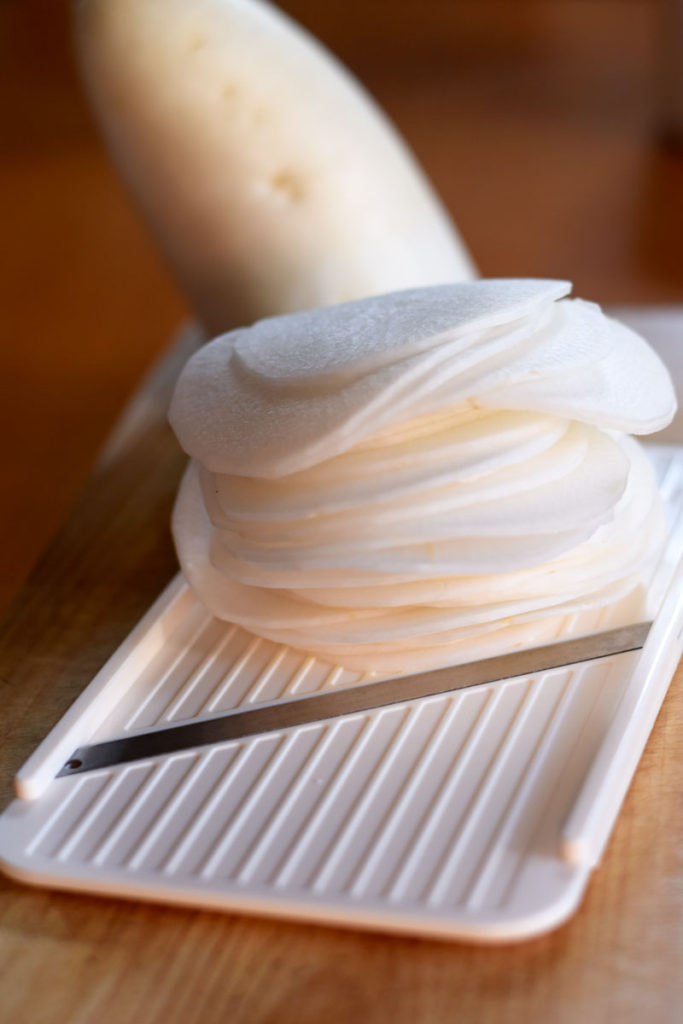
Wrappers made from Daikon Radish
When first attempting to make pan-fried dumplings with daikon slices, I faced an obstacle:
too much moisture.
First, all the water in daikon made it difficult to wrap the dumplings. The edges of the round daikon slices wouldn’t stick together.
Then, once I started to cook them, my fry pan quickly turned into “soup gyoza”. All the unwanted moisture made it hard to make them crispy golden brown like regular gyoza.
I discovered the solution by accident.
Because I had some leftover daikon slices from an earlier trial run, I left them inside the fridge wrapped in paper towel for a couple of nights.
Thankfully, I was all out of Ziplock bags– the slices had dried out.
When I tried making gyoza with the dried daikon slices, all three problems were solved.
This time, the daikon slices easily folded and stuck together perfectly. They didn’t create excess water in the fry pan.
And, the outsides turned that perfect golden brown.
It was meant to be.
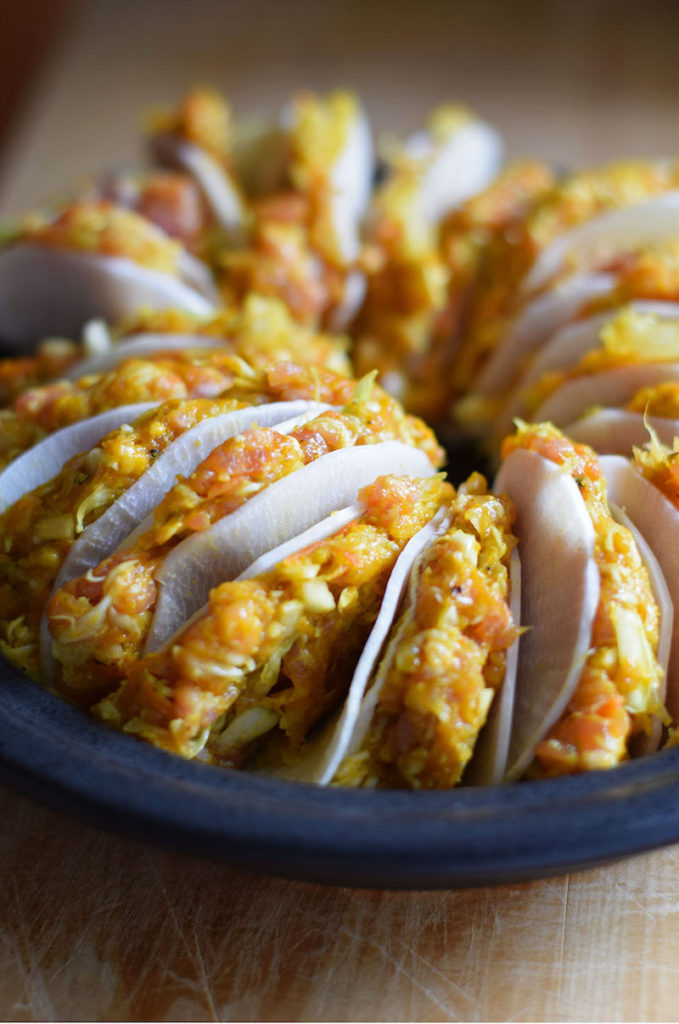
The Secret to Making Healthy Dumplings with Daikon Slices
There’s one more secret to getting these gyoza to turn out.
To get the slices of daikon radish thin enough, you’ll need to use a cabbage shredder.
I bought mine at a 100 yen store.
I learned this lesson the hard way. Even when I used a sharp knife, I wasn’t able to slice the daikon thin enough.
If your slices are too thick, they’ll crack in half when you fold them around the filling.
A bonus: you’ll also be able to use the cabbage shredder to shred the cabbage that goes inside.
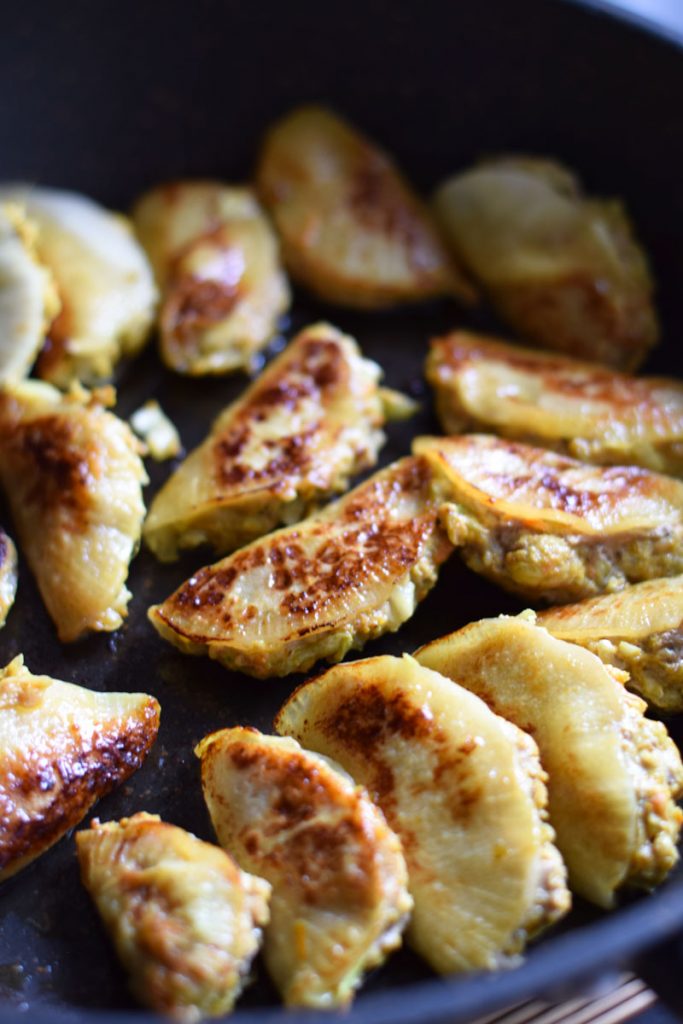
Alternative Ingredients to Make Gyoza Dumplings Healthier
Traditional gyoza in Japan are usually made with minced pork, cabbage, Chinese chives, and seasonings. You could easily use minced chicken as alternative or make them vegetarian.
Garlic and ginger are also key ingredients. Both are really good for you.
So far I haven’t had any complaints from co-workers saying that I reek of garlic.
I also added some turmeric, which has been used in Chinese medicine for centuries as a potent anti-inflammatory and antioxidant.
Daikon radish is also full of nutrients and doubles as a powerful antioxidant.
Once the slices are cooked by the steam, the taste and texture resembles original wraps made with dough.
Again, if you’re unable to find daikon at a supermarket or Asian grocery store, you could also try thin slices of zucchini or leaves of boiled cabbage.
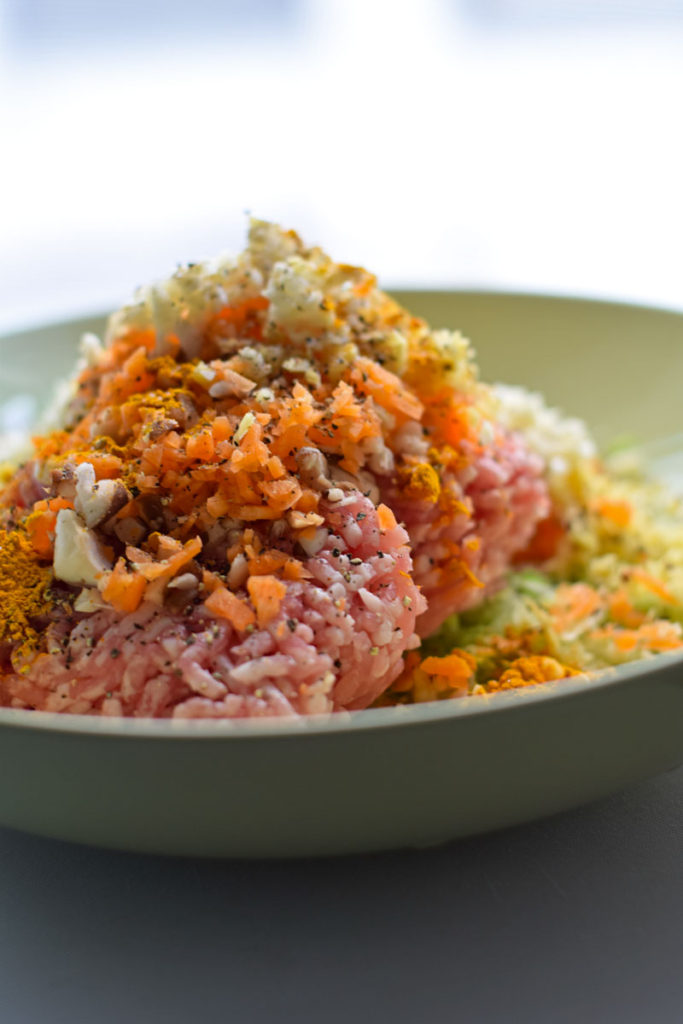
Gyoza Sauce for Dipping
The easy gyoza sauce I made is just like what you would see on a restaurant table in Japan.
It’s a simple mix of three ingredients: soy sauce, rice vinegar, and chili oil (rayu).
From what I’ve learned, the “golden ratio” for the best proportions of the three ingredients is five: four: one.
five parts: soy sauce, four parts: rice vinegar, and one part chili oil
Instead of chili oil, I used thinly sliced dried red chili.
I used organic soy sauce, but you could try a gluten-free soy sauce, tamari, or coconut aminos.
As for the rice vinegar, I chose one that didn’t contain added sugar.
Another low carb, gluten-free option for a dipping sauce is just mix together some rice vinegar and freshly ground black pepper.
I got this idea from Min Min, a famous Chinese restaurant in Tokyo and Utsunomiya, the “gyoza capital” of Japan.
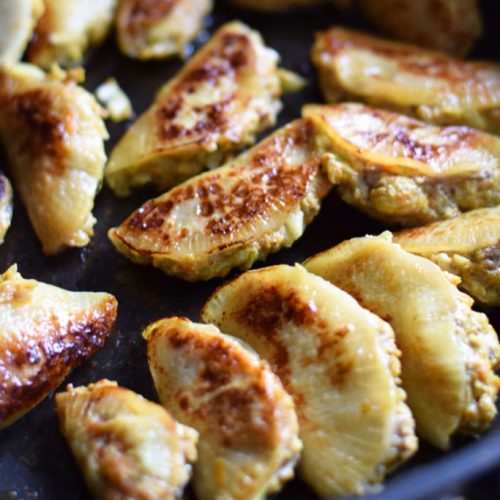
Healthy Dumplings with Daikon Wrappers
Ingredients
- ⅓ daikon radish
- ⅗ lb minced pork 260 grams
- 1 ½ cups shredded cabbage
- 2 shiitake mushrooms finely chopped
- 1-2 tablespoon grated carrot
- 3 cloves garlic makes 2 ½ tablespoon finely
- 1 knob ginger (approximately 1 inch) makes about 1 ¾ tablespoon chopped
- 3 pinches salt
- ¾ teaspoon ground turmeric
- 2 pinches ground cumin (optional)
- 1 teaspoon soy sauce or gluten-free alternative
- 2 teaspoon sesame oil
Dipping Sauce
- 5 teaspoon soy sauce or gluten-free alternative
- 4 teaspoon rice vinegar oil
- dried red chilis a few pinches
Instructions
Advanced Prep
- Peel and slice daikon with a cabbage shredder (slicer) . If possible, wrap with paper towel. Store in refrigerator for a few days without a container or plastic bag so it dries out.

Prep
- Shred about ⅙ of a head of cabbage to make 1 ½ cups of shredded cabbage.
- Then finely chop the shredded cabbage with a knife. Put in mixing bowl.

- Peel and finely chop garlic, 1 knob of fresh ginger, and carrot. Add to mixing bowl.
- Add ⅗ lbs minced pork to bowl.
- Sprinkle turmeric powder, ground cumin, and salt on top.
- Season with freshly ground pepper. (about 6-7 twists of a pepper mill)

- Mix together all ingredients using your fingers.
- Finally, add soy sauce. Mix in with fingers. Let sit.

- Using your fingers, cover half of each circle of daikon.
- Fold each daikon wrap around the filling. The corners should snap so the two folds can stick together easily.

Cooking
- Turn on stove top to med-low heat.
- Add sesame oil to pan. Let oil pre-heat for about a minute.
- Add gyoza to the pan. Let cook until the bottom begins to brown.
- Cover with lid. Let steam until pork fillings are fully cooked (about 6-7 minutes).
- Remove lid. Let any moisture boil off. Carefully cook and turn gyoza with cooking chopsticks or a spatula until golden brown.

- Serve warm with dipping sauce.

Dipping Sauce
- Mix soy sauce, rice vinegar, and sliced dried red chilis
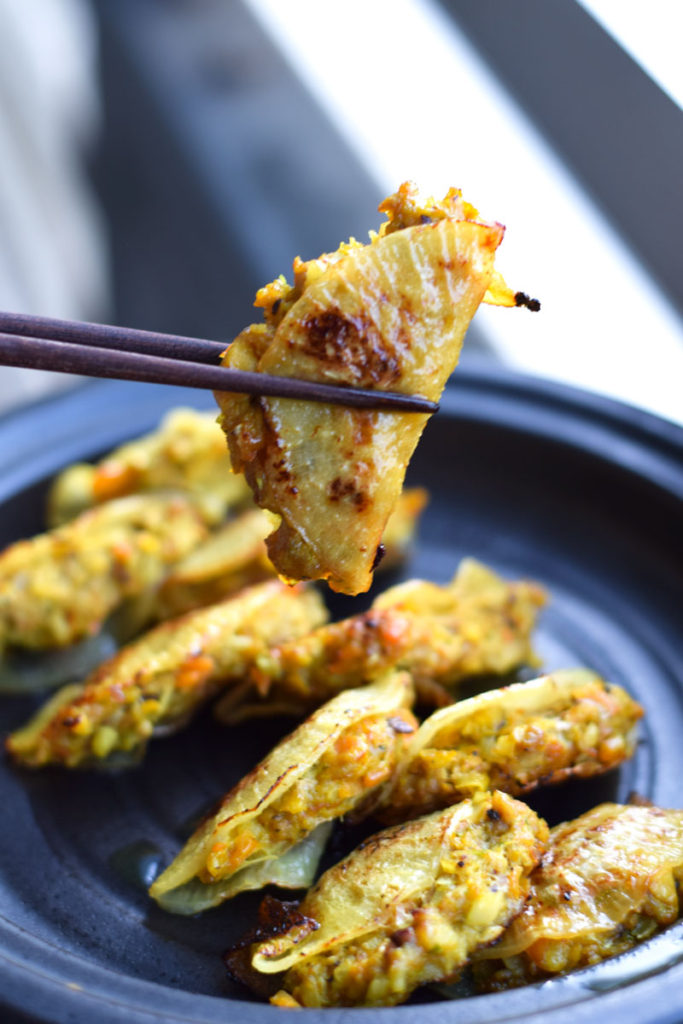
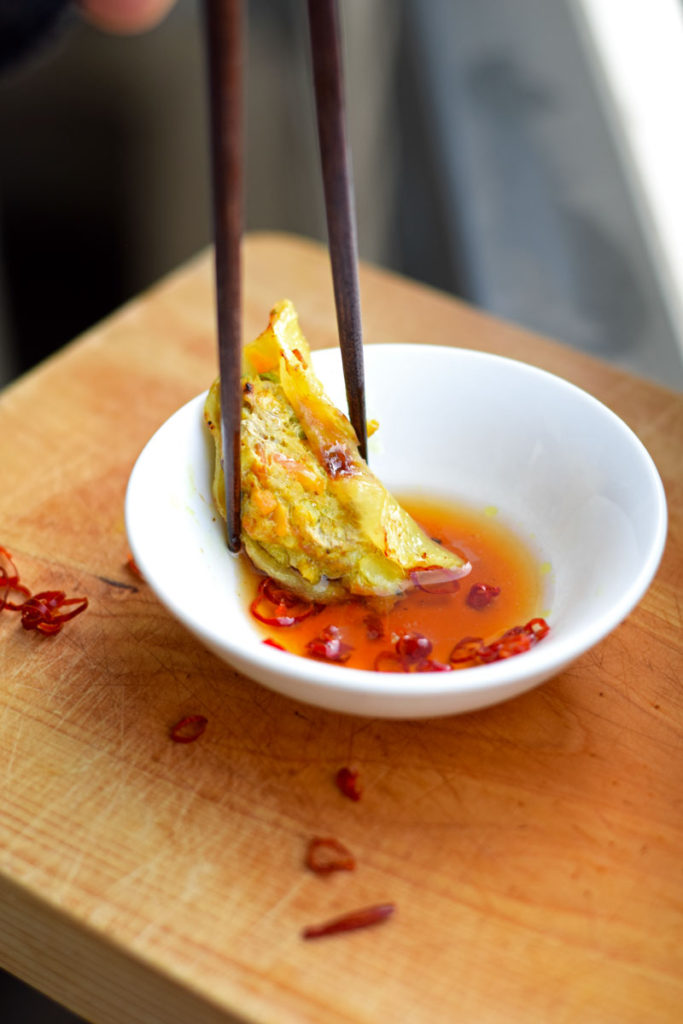
Frequently Asked Questions:
1) Are gyozas healthy?
Even vegetable gyoza or vegan gyoza still tend to be fried or deep-fried, making gyoza not a great healthy choice. The wonton wrappers are "empty carbs" that contain gluten and wheat flour.
2) What are the healthiest dumplings?
The healthiest dumplings are filled with high quality vegetables and meat. In theory, homemade, steamed dumplings made with grass-fed minced meat and organic vegetables would make them the healthiest. Thinner wonton skins would be better, unless you use alternatives to wheat wrappers like daikon radish, zucchini slices, or nori seaweed.
3) What is the difference between gyoza and dumplings?
Gyoza originated in China. In Japan, it’s considered a Chinese food. Gyoza is the Japanese pronunciation of the Chinese name jiaozi.
Japanese gyoza are made with thinner wonton wrappers, often store-bought ones. They’re half-moon shape, usually with a pleated edge. Gyoza in Japan are deep-fried, pan-fried then steamed, or boiled. Garlic is often used as an ingredient. The fillings are more finely chopped than Chinese jiaozi.
Chinese potstickers tend to be doughier and made with thicker wonton wrappers. They are usually larger than Japanese gyoza.
4) Can dumplings be healthy?
It depends on the type of dumplings. As a general rule, deep-fried dumplings are the least healthy. Normal, pan-fried gyoza are probably slightly better for you. Next in line are steamed or boiled dumplings.
The wontons are usually made from wheat flour. The thicker the wonton skin, the more carbs and gluten.
Store-bought dumplings are likely not filled with high quality ingredients and likely contain MSG or other additives.
What about Japanese vegetable dumplings or vegan potstickers? Sounds healthy! But these options are probably fried in bad oils or made with wheat flour wrappers.
Good news though! My gyoza recipe made with daikon radish wonton skin are low carb and can be adapted to be 100% gluten-free.
5) How can I make my dimsum healthy?
First, instead of using dumpling dough, try using a healthier low-carb wrap like daikon, zucchini, or nori seaweed.
Rather than pork, you can use ground chicken to make chicken gyoza. Other healthy proteins like lamb or grass-fed beef can also be used.
Mix together with finely chopped vegetables like green onion, nira (Chinese chives), spring onion, cabbage, Napa cabbage, ginger, etc.
Note: In Japan, minced garlic cloves used to make gyoza. To my knowledge, in China garlic is not used.
Finally, instead of a neutral oil like canola oil or vegetable (which are inflammatory), try sesame seed oil, macadamia nut oil, or grass-fed butter to pan fry. Or steam or boil the dumplings if they won't fall apart.
Miracle recipe for healthy dumplings – A lesson for Success!
Author’s note:
I wasn’t sure if I would be able to finish this recipe.
My first few tries to use daikon slices in place of wonton skins were total flops.
Inside my temporary home in Tokyo, it was so dark and gloomy for taking food pictures.
But just like in life, when we start something new, we’re not sure how it’s going to turn out in the end.
At the time, it feels like it will never turn out.
When you learn to let go of control and stop trying to force it, somehow things just work out on their own.
We call it a miracle.
It took a miracle for these gyoza to turn out.
This recipe for healthy dumplings ended up turning out great…
by accident.

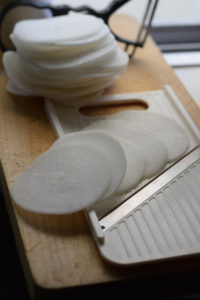
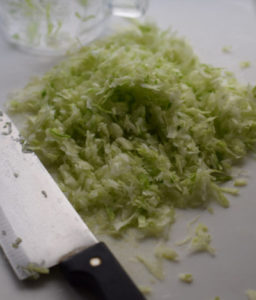
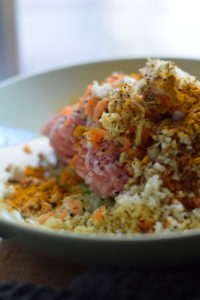
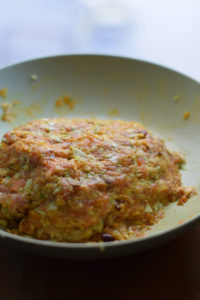

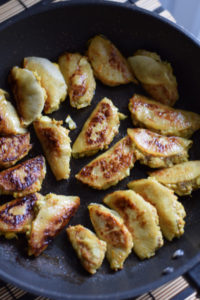
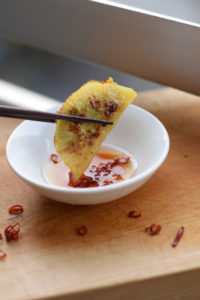

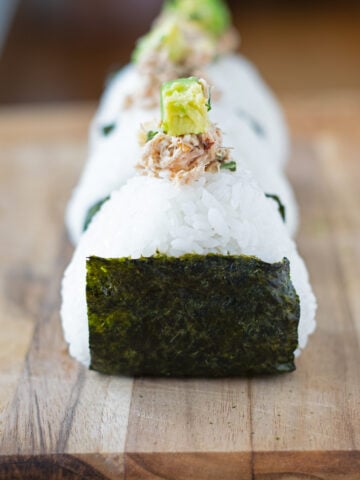

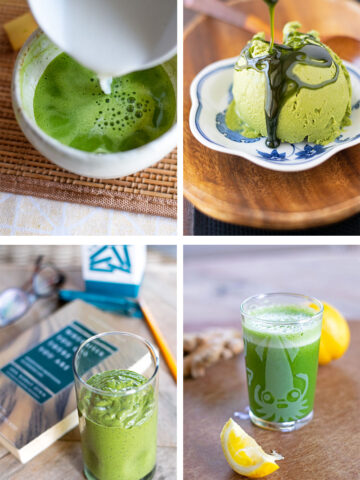




Rinz says
Heathified gyoza that still tastes great?! Yes, please!! Loved this recipe. Will be making again.
Functional Medicine Haru says
I rarely leave comments, but I thought you recipe was unique and it turned out lovely. I'm Japanese and love my dumplings! This is a much healthier alternative with the use of daikon (aids in digestion) for glutinous wrappers (damages our gut lining), turmeric (anti-inflammatory) and cumin (aids in digestion, optimize our blood sugar/blood pressure, etc). I enjoyed it very much and it was a pleasant surprise for my boyfriend 🙂 Thank you for sharing - your efforts prevailed!
Matt says
Thank you for your kind comment, Haru! I'm so glad to hear that the dumplings turned out for you! I appreciate you taking the time to leave a note.
As a food blogger, it makes my day.
Shayla S. says
This recipe has saved my life!
I made it recently and everything turned out perfect. I was surprised that it was so filling as well! Try this recipe immediately - you won’t be disappointed.
Matt says
Aww, thanks so much, Shayla! That means a lot to me.